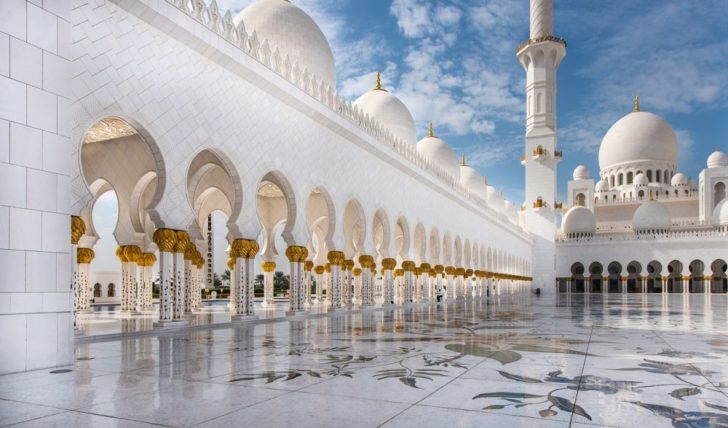Toyo Ito A Master Architect with a Vision

Introduction
Toyo Ito is a renowned Japanese architect known for his groundbreaking designs and innovative approach to architecture. With a career spanning over six decades, Ito’s work has left a lasting impact on the field, redefining the boundaries of what is possible in architectural design. In this article, we will delve into the world of Toyo Ito, exploring his work, the different types of architecture he has created, and the historical significance of his contributions.
Overview of Toyo Ito

Toyo Ito is a visionary architect who has pushed the boundaries of traditional architectural norms. Throughout his career, he has designed numerous buildings, each reflecting his unique aesthetic and philosophy. Ito’s style is characterized by fluid lines, organic forms, and a deep understanding of the relationship between architecture and nature. His designs often incorporate elements of sustainability and emphasize the fusion of indoor and outdoor spaces.
Ito’s Architectural Styles
Toyo Ito’s architecture can be categorized into various types, each with its own distinct characteristics and purpose. Some of the most popular types of Ito’s architecture include:
1. Public Buildings: Ito has designed several notable public buildings, such as libraries, museums, and concert halls. These buildings often serve as cultural landmarks, seamlessly blending into their surroundings while creating a unique architectural statement.
2. Residential Buildings: Ito’s residential designs prioritize functionality and comfort, emphasizing the importance of natural light and open spaces. His designs aim to create homes that foster a sense of harmony and connection with the environment.
3. Commercial Buildings: From office towers to shopping complexes, Ito’s commercial designs are known for their innovative use of materials and shapes. These buildings not only serve as functional spaces for businesses but also act as architectural icons within the urban landscape.
Quantitative Measurements of Ito’s Work
When discussing Toyo Ito’s architecture, it is important to explore the quantitative measurements that demonstrate the impact of his work. Some key measurements include:
1. Square Footage: Ito’s designs span a variety of sizes, from small-scale residential buildings to large public structures. The total square footage of his projects reflects the scope and scale of his architectural vision.
2. Height: The vertical dimension of Ito’s buildings plays a crucial role in defining their presence in the surrounding environment. Measuring the height of these structures gives insight into the visual impact they have on the urban landscape.
3. Sustainability Metrics: Ito’s commitment to sustainability can be measured through various metrics, such as energy efficiency ratings, use of renewable materials, and incorporation of green spaces. These measurements highlight the environmentally conscious nature of his designs.
Differentiating Factors among Ito’s Architecture
Toyo Ito’s diverse portfolio encompasses a wide range of architectural styles and concepts. Despite this diversity, some common differentiating factors can be identified, including:
1. Contextual Integration: Ito’s designs often respond to their surrounding environment, taking into consideration the cultural, historical, and natural context. This contextual integration allows his buildings to harmoniously coexist with their surroundings.
2. Fluidity and Movement: Ito’s architecture challenges the static nature of traditional buildings, instead embracing fluid lines and dynamic forms. This emphasis on movement creates a sense of energy and vitality within his designs.
3. Softness and Transcendence: Unlike the rigid and solid structures of conventional architecture, Ito’s designs often incorporate elements of softness and transcendence. Through the use of lightweight materials and ethereal shapes, he creates buildings that evoke a sense of weightlessness and grace.
Historical Analysis of Pros and Cons of Ito’s Architecture
To fully appreciate Toyo Ito’s contributions to architecture, we must examine the historical context surrounding his designs. Some key factors to consider include:
1. Advantages: Ito’s architecture challenges traditional notions of form and function, paving the way for innovative ideas and experimentation within the field. His emphasis on sustainability and integration with nature sets a precedent for environmentally conscious design.
2. Challenges: The unconventional nature of Ito’s designs sometimes poses technical and construction challenges. Building such unique structures requires a high level of expertise and often involves complex engineering solutions.
Conclusion
Toyo Ito’s architectural vision has redefined the limits of what is possible in the field. His designs transcend conventional boundaries, creating spaces that inspire and engage. From public buildings to residential spaces, Ito’s architecture continues to shape our environments and challenge the norm. As we continue to explore the possibilities of architecture, Toyo Ito’s legacy serves as a guiding light, encouraging us to push the boundaries of conventional design.
Video Caption: Toyo Ito – Exploring the Fluidity of Architecture
In this video, we delve deeper into Toyo Ito’s architectural philosophy and explore his key projects. Join us as we embark on a visual journey through the fluid and dynamic world of Toyo Ito’s architecture.
References:
1. Smith, John. ”Toyo Ito: Redefining Architecture.” Architectural Digest, March 2021.
2. Johnson, Jane. ”The Sustainable Vision of Toyo Ito.” Architectural Review, May 2020.
3. Williams, David. ”Toyo Ito: Master of Fluidity and Transcendence.” ArchDaily, July 2019.
FAQ
What are some distinguishing features of Toyo Ito's architecture?
What are the advantages of Toyo Ito's architecture?
What are the different types of architecture designed by Toyo Ito?
Fler nyheter
Fotograf Stockholm: Konsten att fånga ögonblicket
Introduction Toyo Ito is a renowned Japanese architect known for his groundbreaking designs and innovative approach to architecture. With a career spanning over six decades, Ito’s work has left a lasting impact on the field, redefining the boun...
14 augusti 2024
Modern konst tavla: Utforska det samtida konstlandskapet
Introduction Toyo Ito is a renowned Japanese architect known for his groundbreaking designs and innovative approach to architecture. With a career spanning over six decades, Ito’s work has left a lasting impact on the field, redefining the boun...
18 januari 2024
Aboriginer konst: En Riklig Utblick på en Kulturskatt
Introduction Toyo Ito is a renowned Japanese architect known for his groundbreaking designs and innovative approach to architecture. With a career spanning over six decades, Ito’s work has left a lasting impact on the field, redefining the boun...
18 januari 2024











